When it comes to upholstery, many wonder about Upholstery Sewing Machines. I often get asked questions related to sewing and sewing machines, such as: Do I need to know how to sew to upholster? Do I need a special sewing machine for upholstery? How do I choose an upholstery sewing machine? Today we are going to go over the ins and outs of what makes a good upholstery sewing machine so you know how to choose the best upholstery sewing machine for your needs!
The good news is that you don’t need to know how to sew to upholster! There are many projects you can tackle with little-to-no sewing required! Here is a blog you can check out that provides no-sew upholstery projects!
For many projects, a domestic sewing machine will work just fine! However, as you grow in your upholstery skills, there may come a time when you want to start tackling bigger or more advanced projects. Having a sewing machine for certain projects is ideal and having the right sewing machine will make life and the project that much easier and enjoyable.
When you compare and contrast domestic sewing machines and industrial sewing machines there are a few common capabilities they share, but also major differences in their handling and functionality.
Stitch Options
With a domestic sewing machine, you have tons of stitch options that you won’t find in an industrial sewing machine that is used for upholstery. However, for the purpose of upholstery, those other stitch options are not necessary. In furniture upholstery, you really only need the straight stitch capability.
Speed
Domestic sewing machines are made for the home and it is assumed that these machines will not be producing high volumes like in a commercial setting. However, if you plan to turn your upholstery passion into a business, your production will not only increase, but you will also want the best quality. Industrial sewing machines provide that higher quality as it allows you to use more durable, thicker fabrics and the stitches are stronger.
Furthermore, the motor in the industrial models is meant to withstand constant use, which means that it can produce faster. The speed of these industrial machines is much faster than a domestic one. You can run your industrial machine continuously without worrying about the longevity of your sewing machine. It can handle the constant use and a more heavy-duty workload.
Fabrics
While domestic sewing machines are great for a variety of projects, if you plan to use thicker, heavier fabrics or complete a certain project like sewing cushions, you will find it to be more difficult on a domestic machine. There are a variety of fabrics and materials that you can sew with on an industrial sewing machine that you can’t with a domestic one. If you plan to use fabrics like chenilles, velvets, or leather, or sew bigger projects, you will need an Industrial Walking Foot sewing machine.
While you can see the major differences between these two types of sewing machines, let’s focus on the must haves in an upholstery sewing machine!
Must Haves in an Upholstery Sewing Machine
- You want a sewing machine that can handle heavier weight fabrics (if you use them regularly).
- One that can use upholstery threads. I use 69 bonded Nylon, which isn’t supported with some domestic sewing machines.
- A servo motor will give you more control over the speed of the sewing as it has a dial that can be easily set to a lower speed. As you get more comfortable you can increase the speed to a much faster speed than a domestic one. That means you will be able to finish more in less time by sewing at higher speeds.
It really comes down to your goals and how you see yourself using the machine! In the long run, an industrial sewing machine is well worth the investment and yes, it is a bit more costly than a basic domestic sewing machine. Many of the fabrics used in upholstery are heavy-weight fabrics that would require the use of industrial machinery if sewing is required for that particular project. For example, if you are working on an upholstery project involving sewing cushions, an industrial walking foot sewing machine will be a game changer!
My Favorite Sewing Machine and Accessories
1. The Juki DNU 1541s is hands down my number one sewing machine choice. The “s” in 1541s is a safety feature that I love because there are no more tangled bobbin messes! (Can you relate to bobbin messes? They are a nightmare to deal with!) I also like the fact that this is a needle feed or compound feed walking foot machine. This two-part system allows the needle to move in tandem with the inner presser foot to pull the fabric through the machine, creating uniform stitches and no fabric shifting, even with thick fabrics.
2. The thread I use for upholstery, slipcovers, and cushions is a 69-bonded nylon thread. This is a thicker, heavy duty thread that will provide strength and durability to your upholstery projects! Other threads used in more common sewing and in domestic machines are not as thick and durable, which will impact your final product and how well it holds up to regular use and overall wear and tear.
3. The most commonly used needle sizes for upholstery are needle sizes 18, 20, 21, and 22. A larger needle size will make a larger hole in the material being sewn, allowing for use of a larger thread size. Needles not only come in various sizes but also come in different needle points, like round, diamond, etc.
4. The most commonly used feet for upholstery are the 1/4″ cording foot, 1/4″ double cording foot, a top stitch foot, and a left and right zipper foot. There are other size options for cording feet which you may want to invest in later if you are finding yourself wanting to create more decorative details.
Choosing the Best Upholstery Sewing Machine for YOUR Needs
While it might feel overwhelming when choosing the right upholstery sewing machine, I encourage you to think about your long-term goals when it comes to upholstery. What fabrics do you commonly use? Do you have dreams of turning this into a business, or plan on producing in higher volumes?
If you find yourself using thicker, heavier upholstery fabrics, or you know that you want to continue upholstering in higher volumes, then an industrial sewing machine that includes all the must-haves listed above will be your best option! If upholstery is more of a fun hobby and the fabrics you commonly use aren’t heavier fabrics like velvet, chenille, and leather, then a domestic sewing machine will probably suffice.
A few brands that I feel are worthy:
As you look at sewing machines, should you have any questions about the different features or models, our team of upholstery experts is always ready and willing to help! Join our online membership and start learning when and where you like with the support of our amazing online upholstery community!


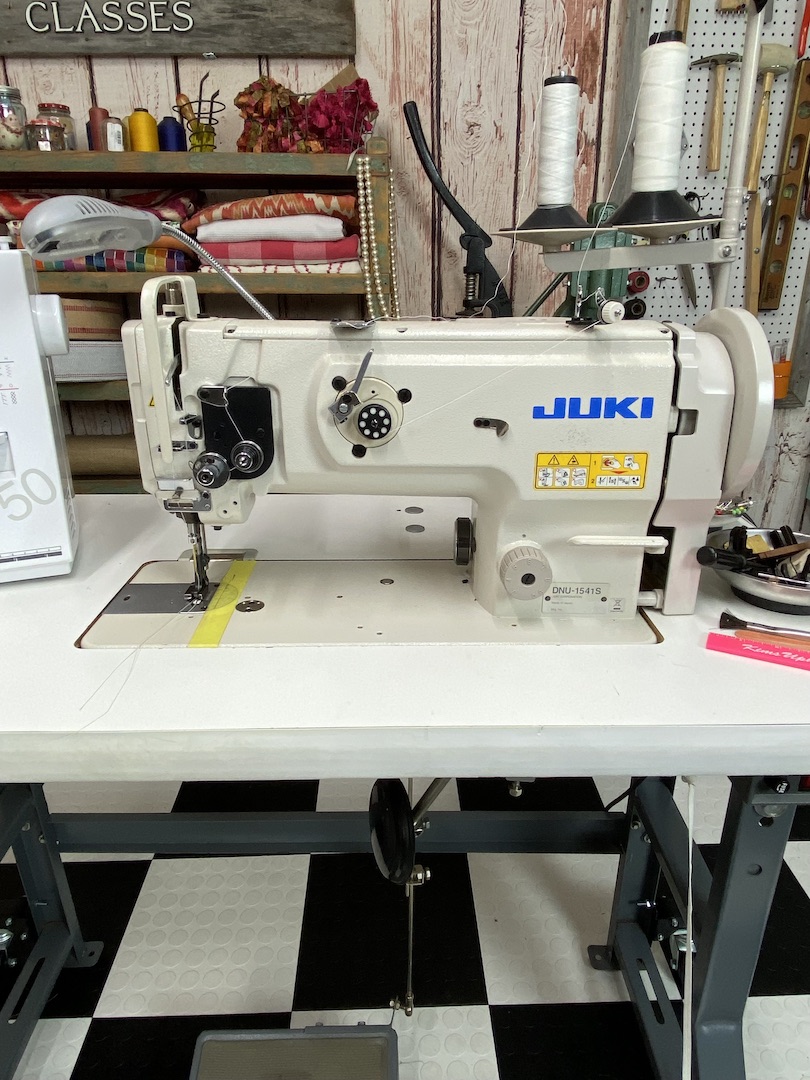

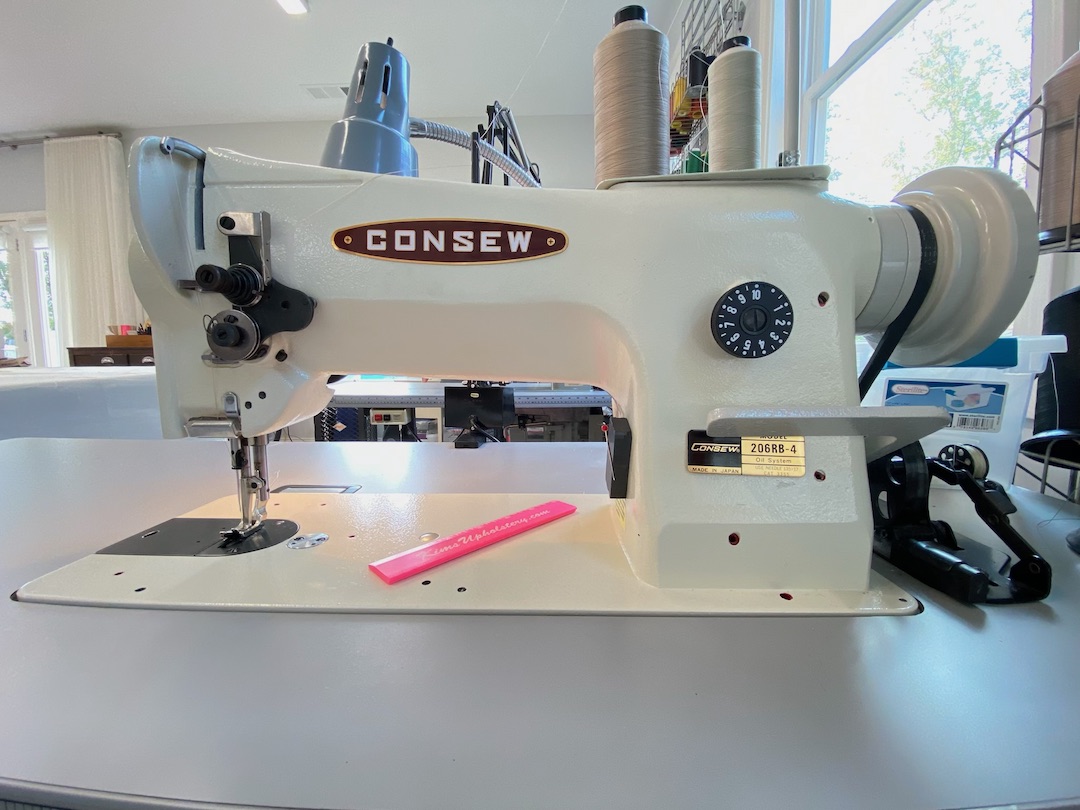
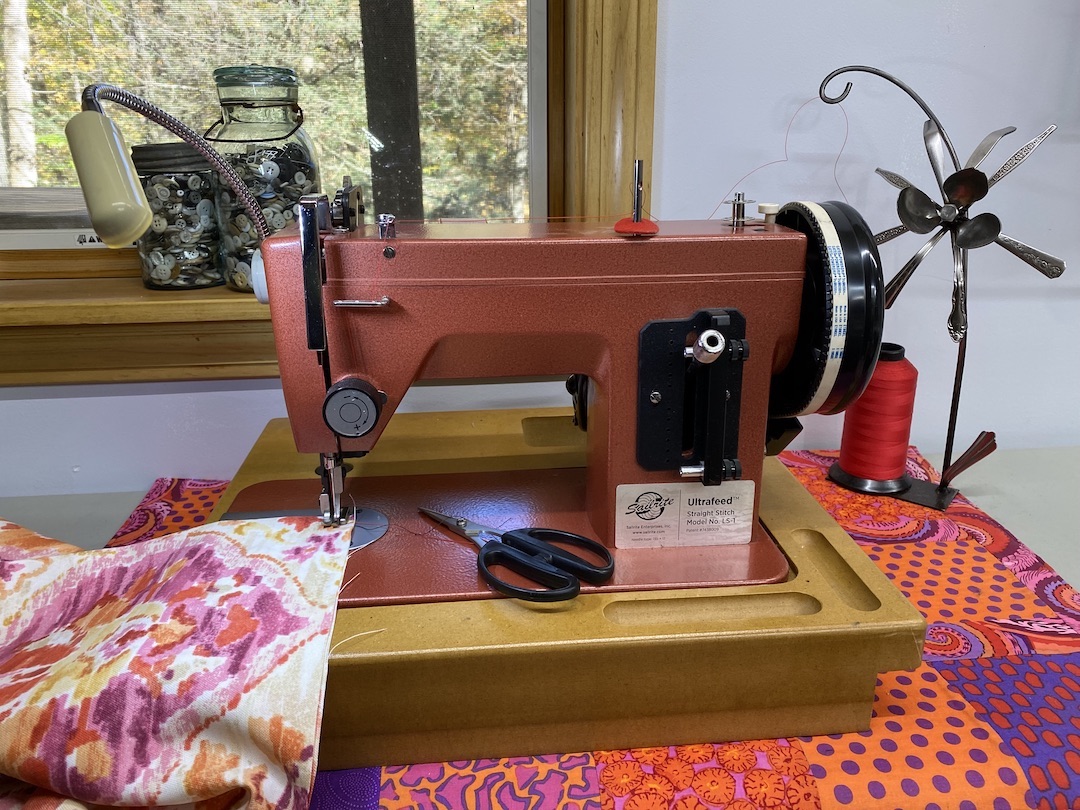
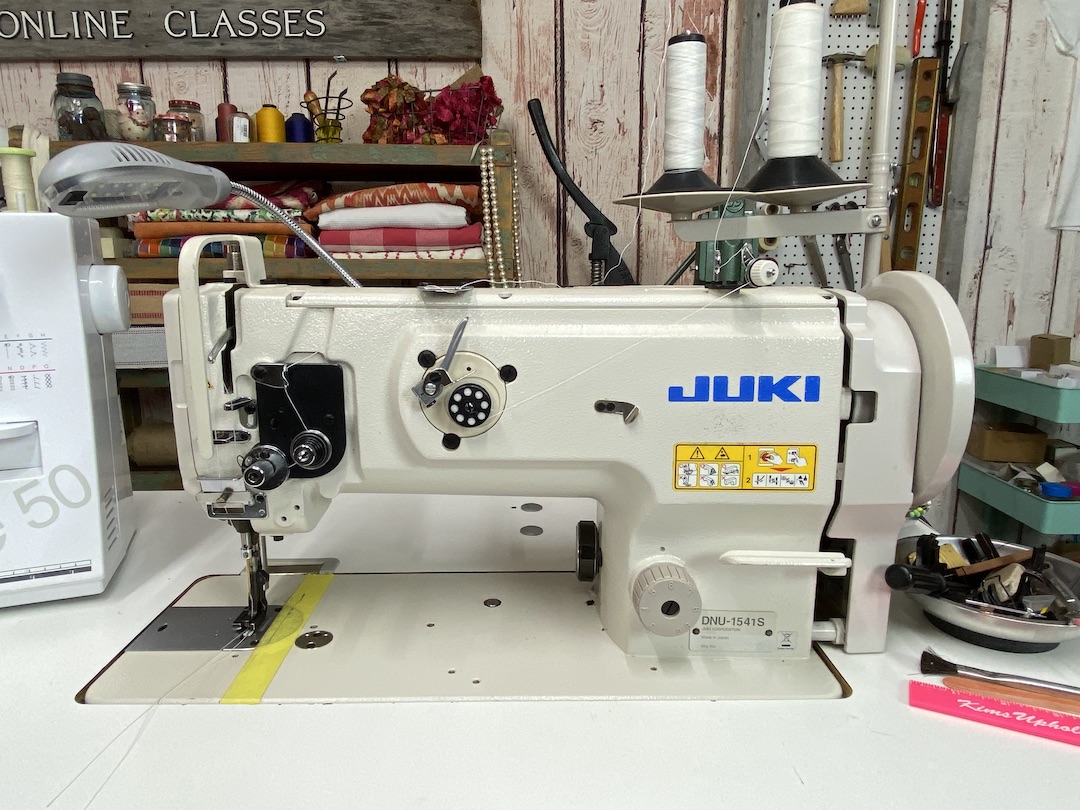
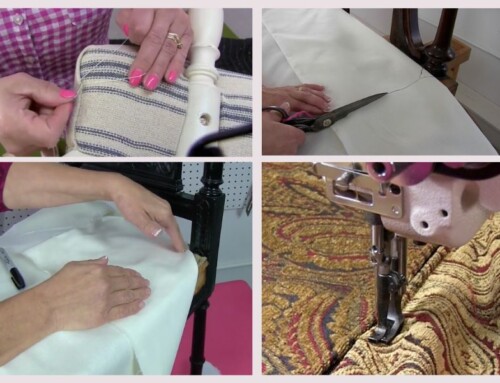
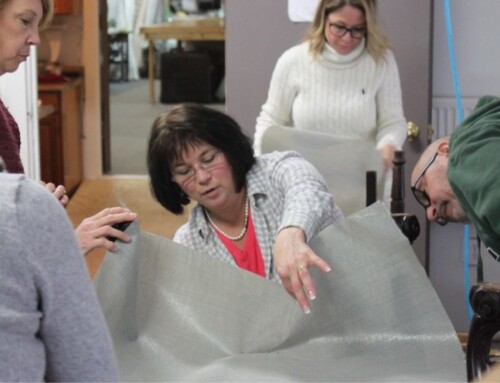
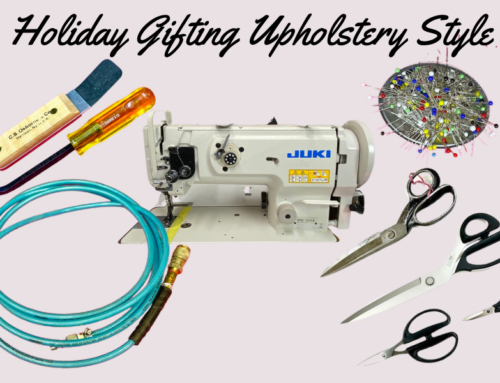
Thank you, good information and links.
I have a Sailrite LS1 walking foot sewing machine
I loved reading this article and I love your You tube videos. I would love to be a member but just too pricey for me. I just bought a small compressor and a stapler using your videos. I am practicing on some easy projects before attempting a channel back chair. I have a disabled husband. A daughter with brain cancer, and I am raising my late son’s teenager. I am 80 so sewing and now this, my new hobby are what keeps me sane. I will keep up with your You tube videos and thank you so much for offering them.
Hi Janie, I am happy to hear that you enjoy our educational videos. Keep going! Kim
Hi Kim, thank you for your time in providing simple but effective insights and guidance on how to upholster. Though the membership is probably justified for commercial folk, I’m not quite there yet but thank you again for making your knowledge freely available.
Kind regards, Moz (Australia)
You are so very welcome. Thank you for reading our blogs. I hope you can share this with others who may also enjoy learning.
Kim